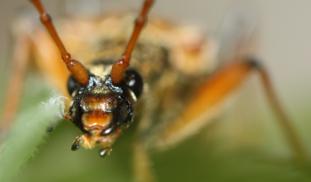Please wait...
About This Project
Tularemia is a deadly disease caused by the bacterium Francisella tularensis (Ft). This bacterium is also a potential biological weapon. In order to develop cures, we need to know more about how Ft avoids the host immune system. For my senior thesis, I will use cockroaches (which have a strong immune system) to test my hypothesis about why certain chaperone proteins are required for disease. This may lead to better treatments in the future.
More Lab Notes From This Project

Browse Other Projects on Experiment
Related Projects
Toward ethical and affordable antivenom solutions: Can anti-toxin be animal cruelty-free?
Snakebite envenoming causes over 100,000 deaths annually, yet current antivenoms depend on animal plasma...
Microplastics: Can engineered enzymes remove microplastics from the human body?
Polyethylene terephthalate (PET) microplastics have been detected in human blood and tissues, and linked...
Shutting down cancer’s recycling system with exosome-based therapy
Pancreatic cancer is one of the deadliest cancers because its cells survive by recycling their own components...




